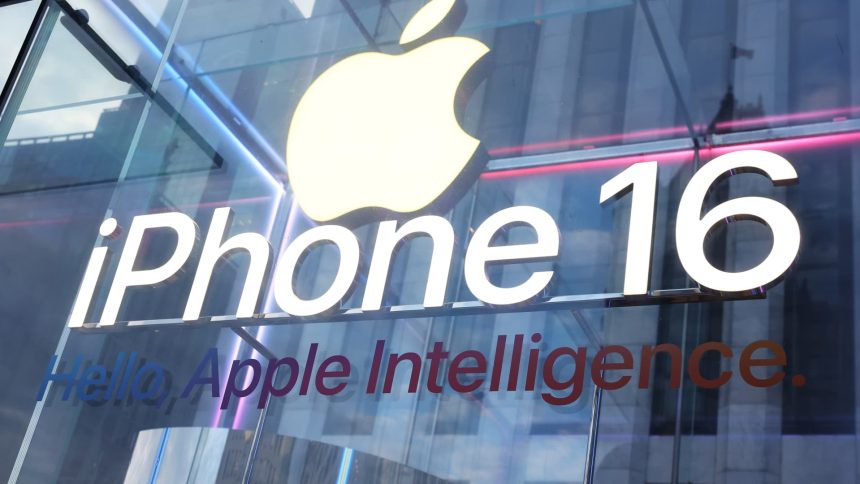A couple of analyst downgrades are making the rounds Monday on megacap stocks that rarely see ratings cuts: Apple and Amazon. They highlight both a problem and an opportunity for regular investors. At Jefferies, analysts downgraded Apple to a hold but increased the price target to $213 apiece from $205. Meanwhile, analysts at Wells Fargo downgraded Amazon to equal weight (hold) and cut their price target to $183 from $225. The issue with both calls is that they’re aimed at short-term traders and hedge funds, not longer-term investors. Neither report calls into question the underlying fundamentals of these businesses or the idea that they will both only get better over time. They’re worried more about the speed of that growth. It also presents a problem for investors who see the downgrades as a reason to sell some shares. As Jim Cramer said on CNBC Monday: How do you get out and then get back in? Is anybody really that good? … I’m not trying to be vindictive. I’m just saying for most of the people at home, these calls are just too hard. Unless they’re like algorithm traders or guys with huge amounts of money at stake, just chill — chill on these.” In the case of Apple, the analysts were bullish on Apple Intelligence, the company’s AI initiative, noting that Apple “is the only hardware-software integrated player that can leverage proprietary data to offer low-cost, personalized AI services.” However, they added that the benefit of these AI features will take a few years to get to the point of being a must-have. In their view, the hardware isn’t there yet to make the AI software a true game changer in terms of how we interact with out devices day-to-day. For Amazon, Wells Fargo analysts said the company “remains a margin expansion story, just likely a more moderate margin expansion pace than the market expects.” They said investors are more prepared for pressure on fourth-quarter operating income but maybe not as much for the first quarter of next year. To be sure, we take a more active approach with stocks in the portfolio. But we also believe that time in the market beats timing the market. It’s about balancing these two principles. We spend a lot of time researching and monitoring our investments and understand that jumping completely in and out of them on short-term headwinds is not how one maximizes long-term gains. We want to identify the best names in a given industry, and manage those positions in a disciplined manner by buying on weakness and booking profits into outsized strength. We always want to maintain diversification, but also ensure we keep exposure throughout, meaning we always want some exposure on our books, when we like the long-term outlook. Let’s say you trim Amazon on the Wells downgrade. When do you get back into these best-in-class tech stock? On the Morning Meeting, Jim noted that the analysts said there are multiple headwinds. “Amazon has had multiple headwinds since it came public. And so what happens is, you have to decide if you can go buy this back at $169 say … every time you’ve had one of these [downgrades on near-term headwinds] it’s been compelling to sell, and every time, it’s been wrong. How about that?” The Apple call is equally troubling. The analysts not only curbed expectations on sales of the iPhone 16, but said the next model will also underwhelm. “The guy is saying basically that the 17 is going to be bad,” Jim said. “I mean honestly? Do you really have that level of vision? Do you have the gun that shoots around the corner? I don’t.” Is there any reasonable way these analysts, smart as they are, can make a call like that with any great deal of confidence? Keep in mind that Apple Intelligence, which we learned this weekend will launch with iOS 18.1 on Oct. 28, doesn’t need a massive upgrade cycle this quarter or even this year. So long as we start to see compelling evidence that the overall upgrade cycle can be shortened by 6 to 12 months as AI features come to market, the stock will continue to work. If anything, these kinds of Wall Street calls can present buying opportunities. Investors (not traders) should consider when to buy, not how fast they can hit the sell button. That doesn’t mean you need to rush in today. Let the weak hands get shaken out and selling pressure taper off. Keep an eye on volume to get a sense of when the selling is done. These calls shouldn’t shake you out of the name if you’re someone with an investment horizon beyond the next few months or quarters. After all, you’ll be hard-pressed to find companies anywhere more in charge of their own destinies than Apple, Amazon — or any of the Super Six (Meta, Nvidia, Alphabet, Microsoft). As famed investor Philip Fisher put it in his book “Common Stocks and Uncommon Profits,” there are those companies that are “fortunate and able” and those that are “fortunate because they are able.’ The former refers to a company that is fortunate because it is able to take advantage of secular tailwinds. For example, we might think of the companies that are right now in a position to benefit from Nvidia’s success in making AI chips. They are fortunate thanks to Nvidia driving an accelerated computing revolution. The latter, on the other hand, refers to companies that are fortunate not because they lucked into some secular tailwind but because they have demonstrated a clear ability to reinvent themselves time and again and as a result, been able to find new growth opportunities. Amazon went from selling books to e-commerce more broadly to the Cloud and now artificial intelligence, logistics, and a slew of other add-ons that lead to increased Prime membership values and in turn membership rates over time. Apple went from computers to iPods to the iPhone to services and now Apple Intelligence. These companies have and, in our view, will continue to find new paths towards growth. Apple and Amazon aren’t where they are because of luck, but rather because they make their own luck. We remain bullish on both. (See here for a full list of the stocks in Jim Cramer’s Charitable Trust.) As a subscriber to the CNBC Investing Club with Jim Cramer, you will receive a trade alert before Jim makes a trade. Jim waits 45 minutes after sending a trade alert before buying or selling a stock in his charitable trust’s portfolio. If Jim has talked about a stock on CNBC TV, he waits 72 hours after issuing the trade alert before executing the trade. THE ABOVE INVESTING CLUB INFORMATION IS SUBJECT TO OUR TERMS AND CONDITIONS AND PRIVACY POLICY , TOGETHER WITH OUR DISCLAIMER . NO FIDUCIARY OBLIGATION OR DUTY EXISTS, OR IS CREATED, BY VIRTUE OF YOUR RECEIPT OF ANY INFORMATION PROVIDED IN CONNECTION WITH THE INVESTING CLUB. NO SPECIFIC OUTCOME OR PROFIT IS GUARANTEED.
A couple of analyst downgrades are making the rounds Monday on megacap stocks that rarely see ratings cuts: Apple and Amazon. They highlight both a problem and an opportunity for regular investors.
Read the full article here
News Room




